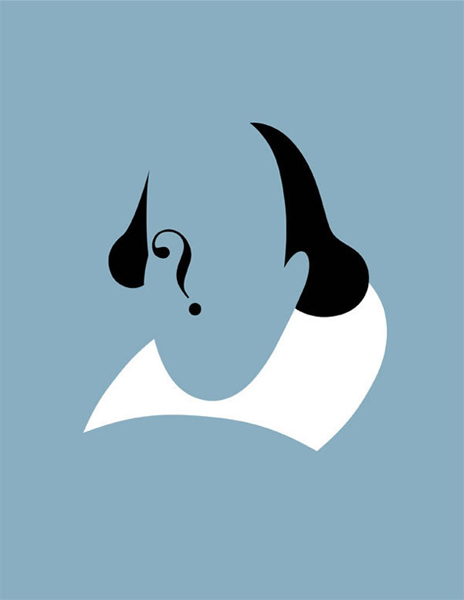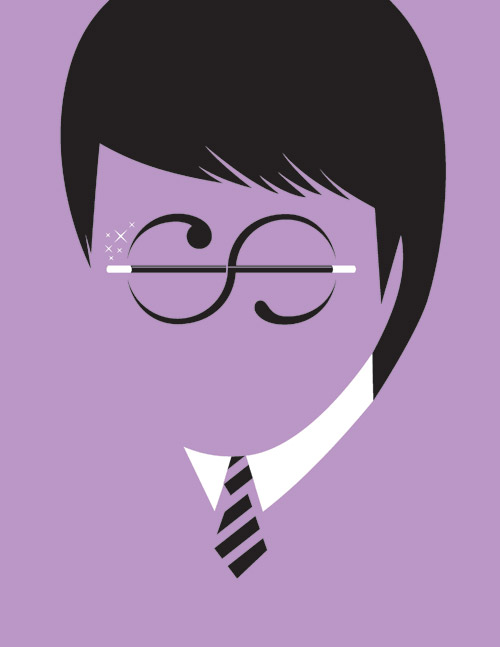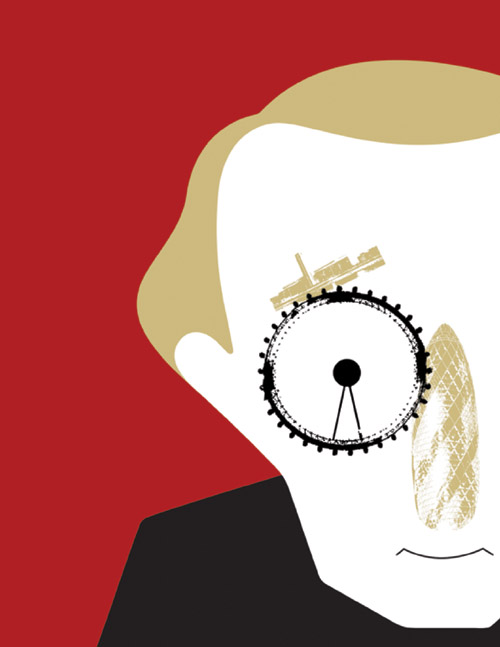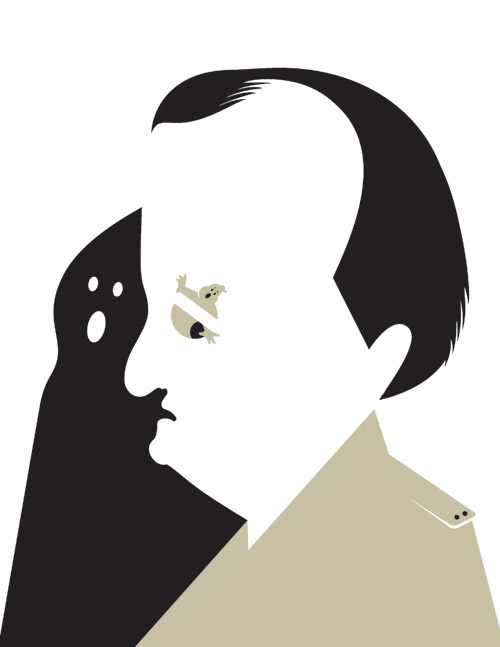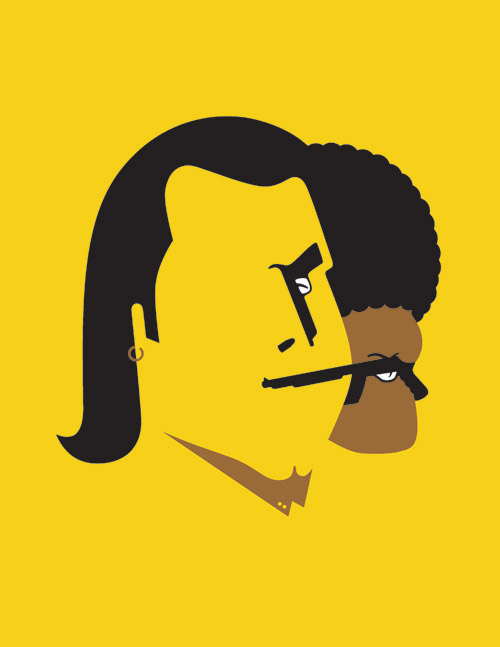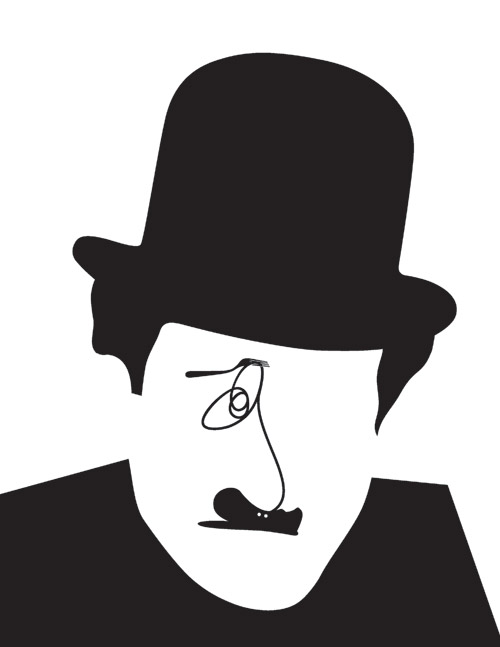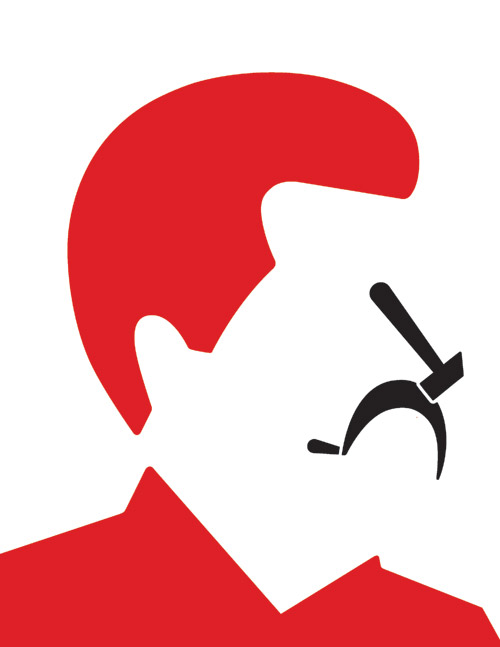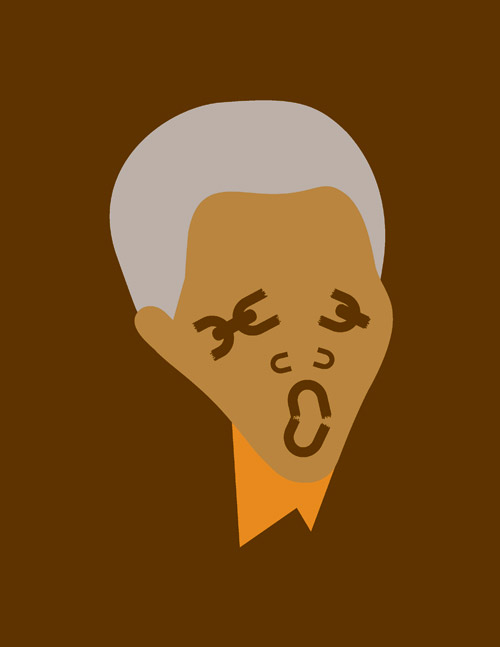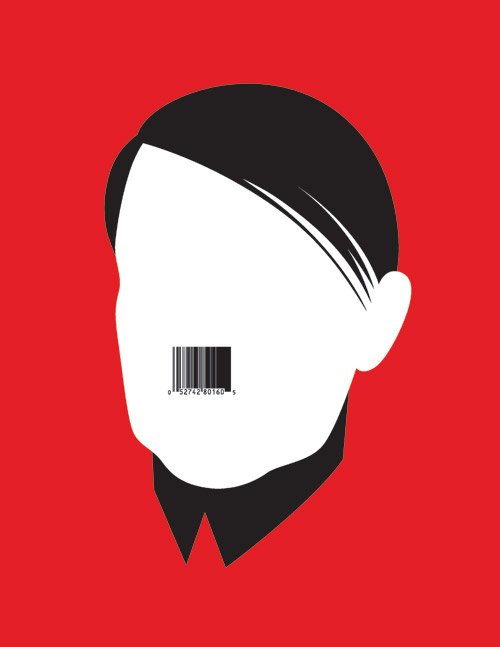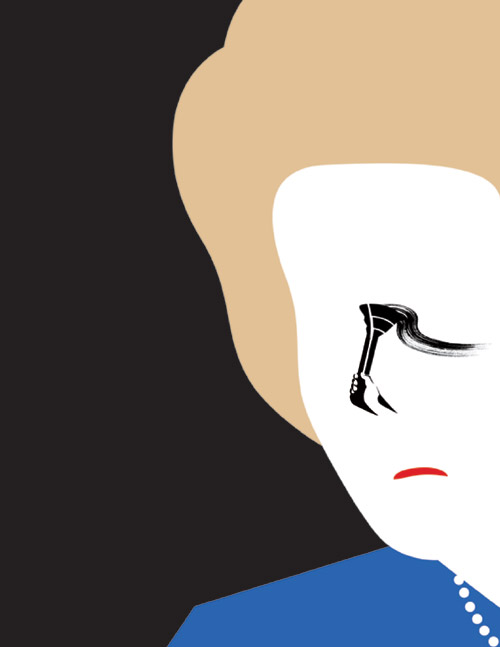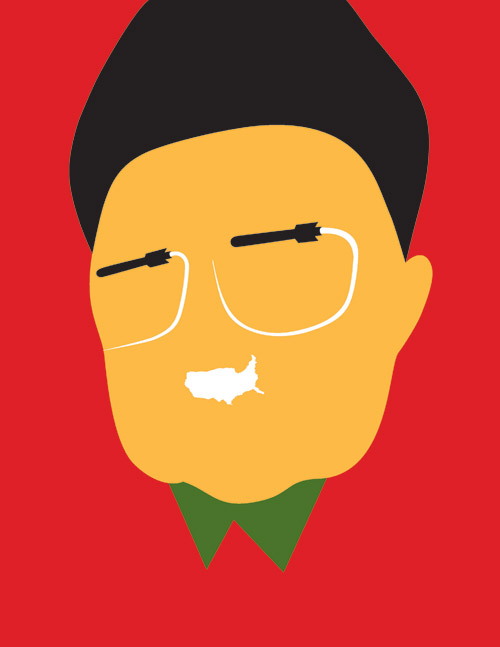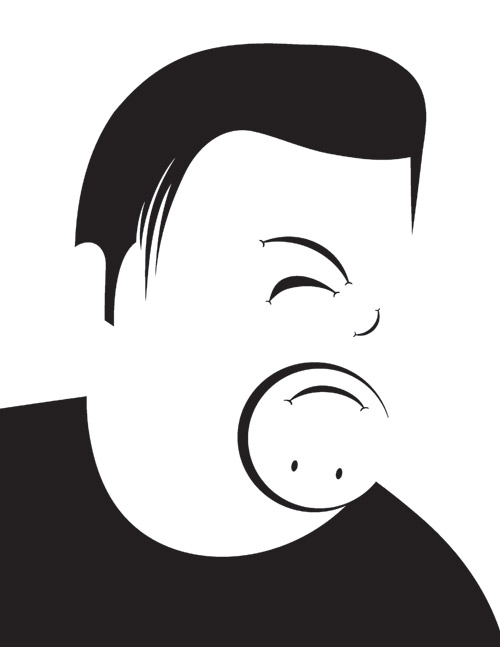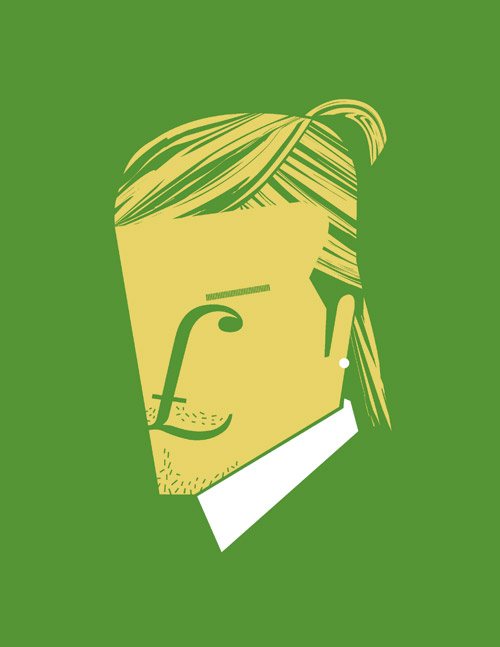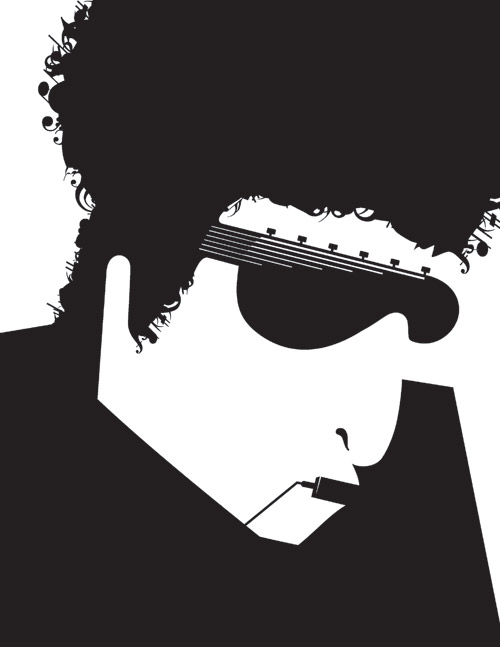nutritionist
Modern Nutrition Aspectsnutritionist
Modern Nutrition AspectsPortraits of Cultural Icons
به هر تصویر نگاه کنید ببینید میتونید حدس بزنید کدوم شخصیت مشهوره؟ زیر هر عکس اسمش نوشته شده
via Brain Pickings by Maria Popova on 7/28/11
CULTURAL ICONS
Albert Einstein
Commissioned
by The Economist for a cover story about 100 years of Einstein. Though
the illustration was never printed, Bar considers this a perfect example
of combining two icons, which results in something that is 'almost like
a logo.' Einstein's famously unkempt hair and the atomic symbol, with
the molecules as eyes, for this famous face.
William Shakespeare
The
first face Bar ever published, a full page for Time Out London related
to a feature article about a BBC program called 'The Search for
Shakespeare.'
['The Search for Shakespeare'] revolved around new biographical discoveries and all the questions these raised. I received this commission about 5 hours before a flight to Italy . All of a sudden the question mark idea linked the theme of the program to one of the most significant philosophical questions of all time: To be or not to be? I chose ‘to be’ and sent the final portrait off about two hours after receiving the assignment.” ~ Noma Bar
Harry Potter
We've
all been exposed to the Harry Potter hype. The success of this image is
how it speaks directly to the fictional Harry Potter story, as well as
the reality of this multi-million dollar industry. The centerpiece of
the illustration is the wand, which evokes fanciful magic, as well as
the almighty dollar.
HOLLYWOOD HEADS
Woody Allen
This
illustration was done for an article about Woody Allen's Film Match
Point, which was shot in London . Bar's use of London architectural
landmarks for the legend's already iconic face is a unique and effective
touch. Nicknamed the gherkin, for its resemblance to a pickle, this
noticeable Norman Foster building replaces Allen's nose, the Tate Modern
forms an eyebrow over one of the skyline's newest structural icons, the
London Eye.
Bill Murray
As
Bar started work on Bill Murray, he was pleased to discover that in
profile, Murray 's face created a ghoulish figure in the negative space.
The Ghostbusters icon for an eye is a rather obvious, but effective
choice.
John Travolta + Samuel L. Jackson
Two
faces may not be better than one, but they are harder to draw.
Illustrating a duo like these two Pulp Fiction characters is a challenge
for Barr because he still needs to render them as a single connected
unit. Clearly, in this example, Bar conjoins the two with the gun.
Travolta's mouth, Jackson 's eyebrow and nose.
Charlie Chaplin
When
Bar works with black and white, he relies on negative space to 'create
forms that allow elements to float.' Here, Bar uses one of Charlie
Chaplin's most famous on-screen moments to define his face, though there
are few actual lines . Inspired by Chaplin's shoe-eating scene in The
Gold Rush, Bar turns a shoelace sum spaghetti strand into Chaplin's eye
and nose; the shoe works double duty as both moustache and mouth.
POLITICAL FIGURES
Joseph Stalin
The
hammer and sickle get rearranged into Joseph Stalin's nose and mouth.
That these two icons can be taken out of context, but remain in context
in that they possess such associative power that the viewer will know
who this feature face is, bolsters the effectiveness of Bar's approach
to illustration.
Nelson Mandela
Many
of Bar's subjects become his subjects because of dubious behavior.
Nelson Mandela's anti-apartheid activism, however, i s a story of
incredible strength in the ace of imprisonment and injustice that
concluded with triumph. Mandela was South Africa 's first president to
be voted into office in a representative democratic election. Mandela
figuratively broke the shackles that imprisoned him for 27 years, and it
is this strength that Bar celebrates with this illustration.
Adolf Hitler
This
portrait of Hitler accompanied James Delingpole's article 'Mein Kash:
Milking the Third Reich,' written for Esquire UK . The piece examined
the publishing trend to release books about Hitler (which number close
to 1,000 on Amazon). For such an article, Bar's choice to convert the
moustache into a barcode was spot-on.
Margaret Thatcher
The
smoking torch that defines Margaret Thatcher's face in this
illustration remarks on the fading political power of her Conservative
Party, descended from the Tory Party. Equally adored and maligned as
England 's Prime Minister from `975 to 1990, the end of her tenure was
spurred by internal struggle within the party. In assessing her legacy,
Bar appropriated the old Tory logo to give a visual representation of
flagging power. The old Tory logo was a flaming torch, while Bar's
interpretation smolders.
Kim Jong-Il
Known
the world over for his cavalier rhetoric about North Korea 's nuclear
capability, missile contrails make for the glasses of Kim Jong-Il.
Commissioned by the Guardian, Bar was under a deadline, and to this day
when he looks at this illustration, he wishes he had had the time to use
only one missile. Be that as it may, the illustration works, as it
looks like Kim and also incorporates what he is known for, weaponry and
antagonizing the United States .
BRITPOP STARS
Ricky Gervais
Through
his roles in shows like The Office and Extras, Ricky Gervais, for Bar,
embodies the black humor of 'loser culture.' Using smiley faces in a
truly ironic fashion, Bar provides a portrait of a 'contemporary,
classic sad clown.'
Jamie Oliver
Celebrity
chef Jamie Oliver has probably spent as much time on TV and book tours
as in the kitchen. An advocate of simple, healthy home cooking, a mortar
for a mouth and a pestle for a nose make this face recognizable.
David Beckham
These
days, the dollar sign would be just as appropriate for David Beckham's
face as the British pound symbol. The soccer star and money -making
machine that is Beckham now spans across the Atlantic Ocean, all the way
to Los Angeles . We'll see if one man can make Americans soccer fans,
but even if he can't, he'll still be rich.
THE MUSICIANS
Michael Jackson
Over
the years, Michael Jackson has made headlines for an array of reasons,
from number one hits to run-ins with the law. Here, Bar riffs on Jackson
's purported pedophilic tendencies, by placing an image of a young
child in the pop star's face. Jackson has never been found guilty of
these accusations in a court of law, though the media frenzy that
surrounded the case seems to have made the eccentric icon that much more
reclusive.
Bob Dylan
A
true cultural icon, Bob Dylan is no stranger to being interpreted. Bar
keeps this one simple, using three of Dylan's tools of the trade:
musical notations, guitar, harmonica. That Bar can invest such age and
mystery into a face that is primarily white negative space is yet
another example of his ability to see subjects as more than just people
-- they are their careers.

برای نمایش آواتار خود در این وبلاگ در سایت Gravatar.com ثبت نام کنید. (راهنما)






















































ایمیل شما بعد از ثبت نمایش داده نخواهد شد

